Devotion – Part 4: Italy
Chapter 1: Roman Forum and Colosseum
We start our travel in Italy at the root of it all – Rome. The Roman Empire is the substance of myths, as well as facts, and remains one of the most successful empires in history. The beginnings of the city of Rome dates to 753 BCE; before that the area was inhabited by small agricultural villages that spoke a variety of Italic dialects. By 700 BCE Greek colonies were established on the southern Italian coast. Greeks and Phoenicians, who originated from the eastern Mediterranean, mostly from Lebanon, were trading with Italian natives.
Not much is known about what is called the regal period from 753 to 509 BCE or the early republic period of 509 until 280 BCE. Greek historians started taking the Romans seriously during the Pyrrhic War, 280-275 BCE, prosecuted against the Romans by Pyrrhus, a Greek king and statesman who later became king of Epirus, a Greek state in the western Balkans.
Roman Forum
Originally a wetland below the Capitoline Hill controlled by the mythical Romulus, the first king of Rome but whose existence is debated, and Palatine Hill controlled by Romulus’ rival Titus Tatius, king of the Sabines. Legend has it that Romulus and Titus reached an accord, drained the wetland below their hills and co-governed Rome from the now mostly dry land that became the Roman Forum. The Forum began as a marketplace but evolved into a place of discussion and politics.
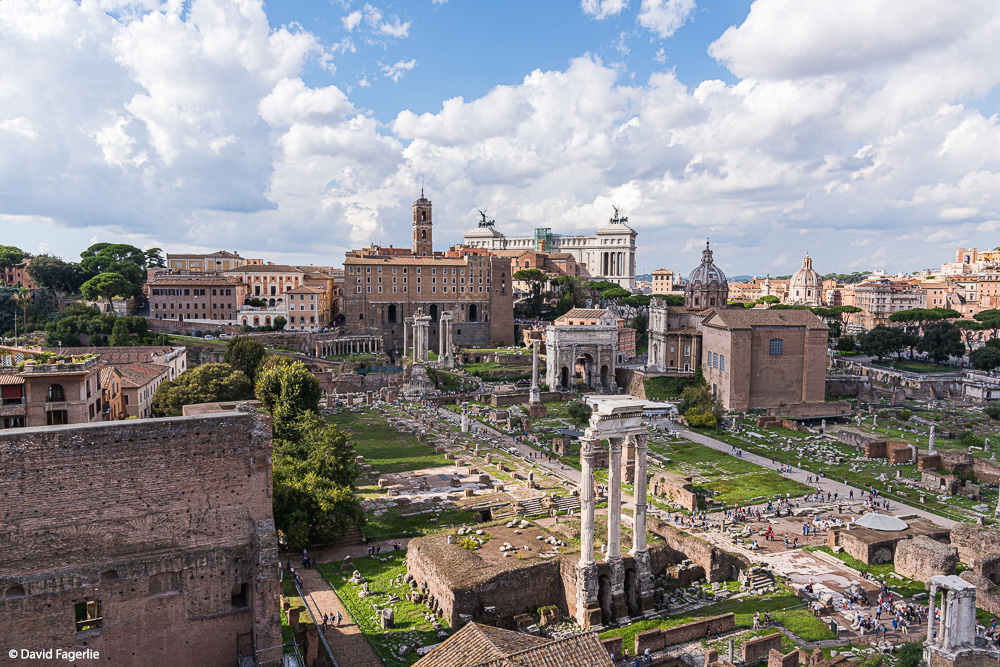
Rome’s second king, Numa Pompilius, who ruled 715-673 BCE, is credited with creating the Roman Calendar and the House of the Vestals (Vestal Virgins), an elaborate 50-room palace in the Roman Forum.

The Temple of Saturn (pictured below) was constructed in 498 BCE by the people and their Senate after a popular uprising that led to the establishment of the Roman Republic. The republic was effective until establishment of the Roman Empire in 27 BCE. Also featured in the next photo is the Porticus Deorum Consentium, originally built in the early 4th century BCE and expanded in the 1st and 2nd centuries CE and extensively renovated in 367 CE.
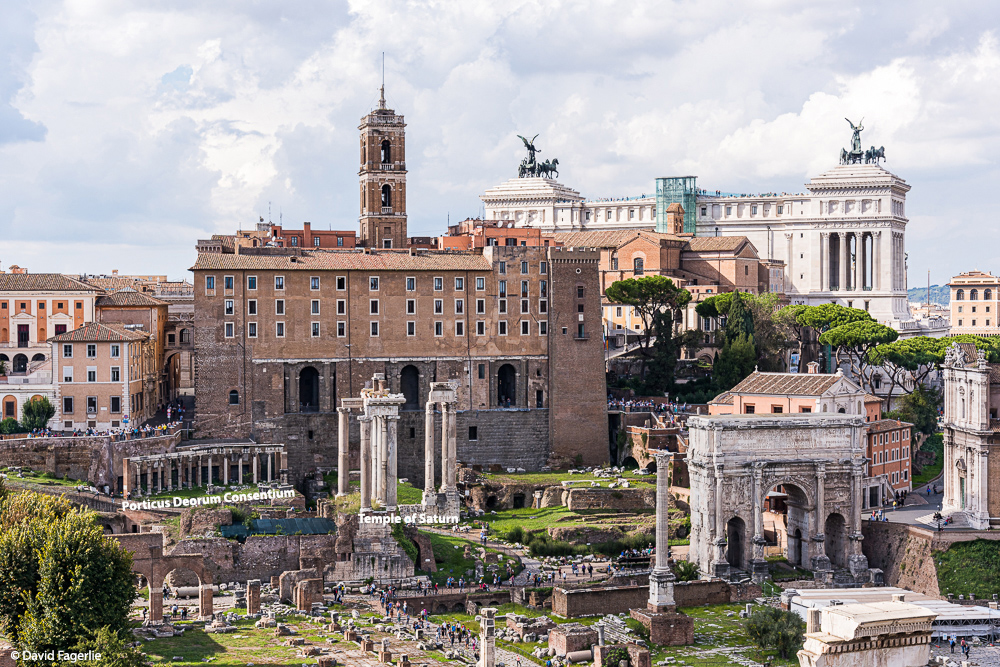
In 494 BCE the new Roman Republic built the Temple of Castor and Pollux. They were twin half brothers in Greek and Roman mythology. Castor’s father was human and Pollux was a son of Zeus.

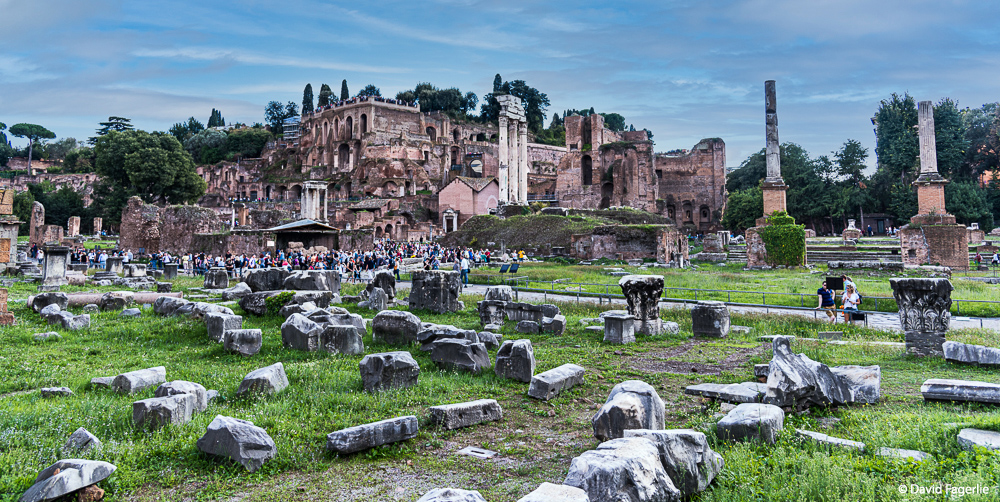
The Temple of Antoninus and Faustina was built by Emperor Antoninus Pius in 141 CE, initially dedicated to the memory of his deceased wife Faustina the Elder. It was rededicated by Marcus Aurelius to Antoninus as well after his death.

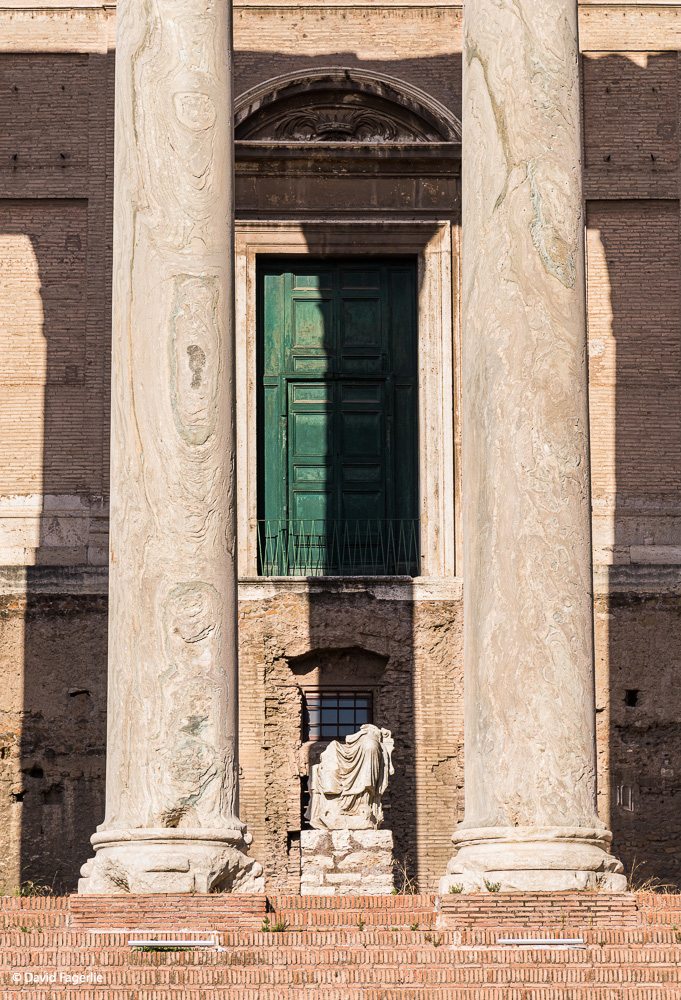
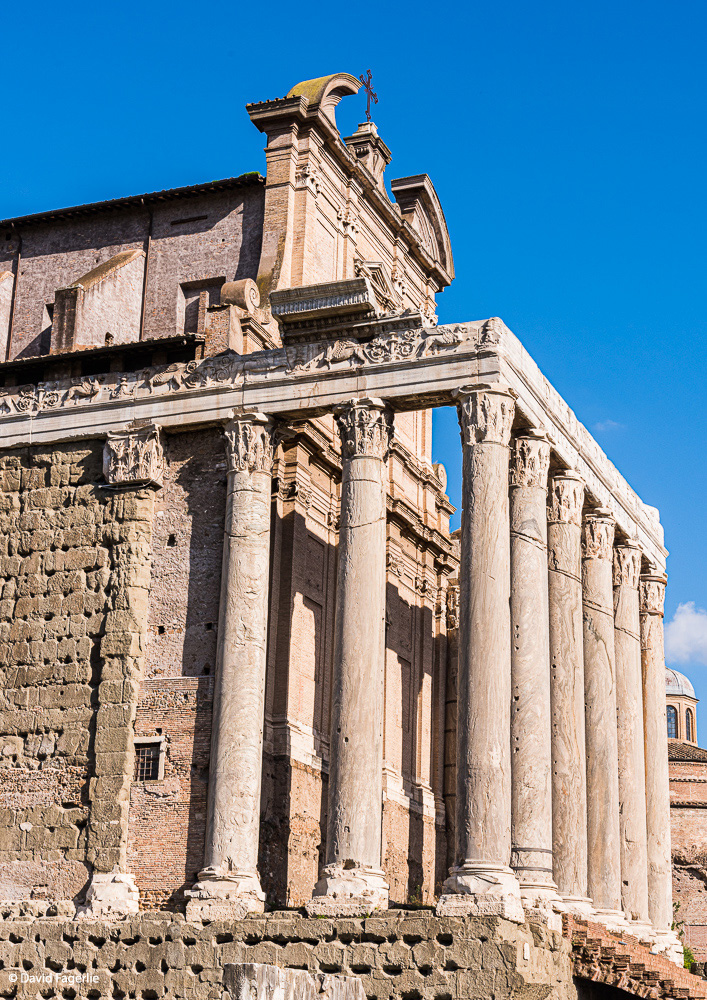
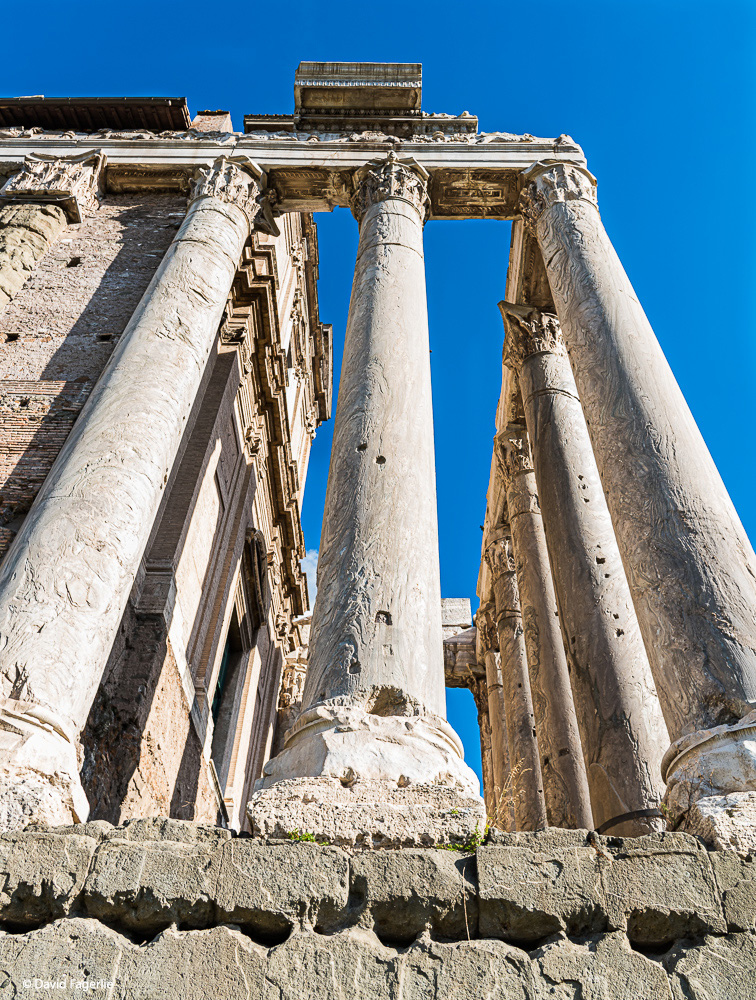
The Arch of Septimius Severus was built in 203 CE to the honor of himself and his two sons for their victories over the Parthians in 194-195 and 197-199.
The Curia Julia was built in 44 BCE as a meeting center of the Senate.
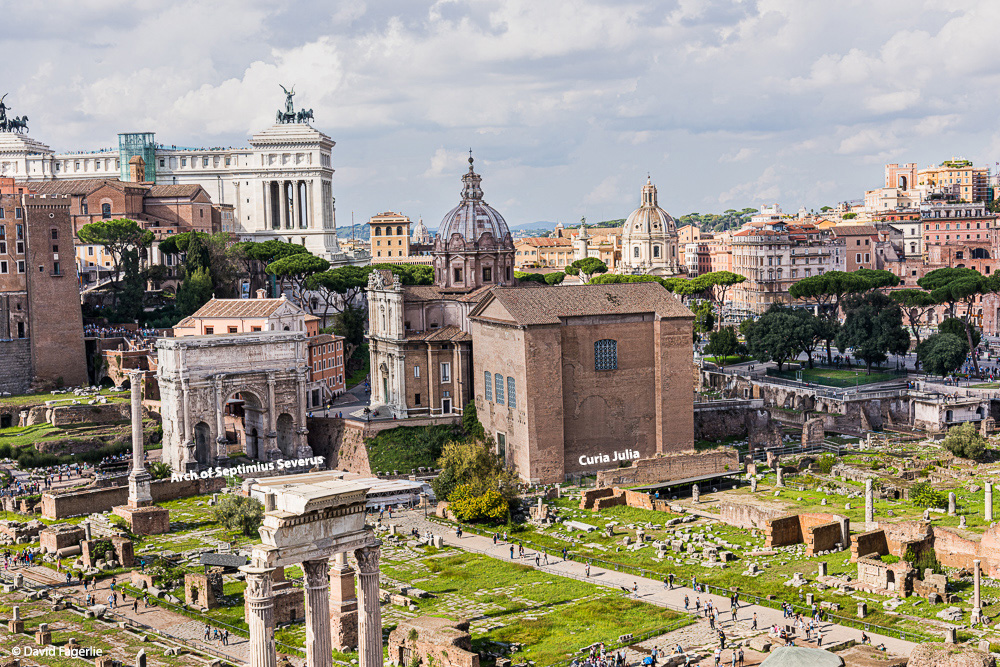
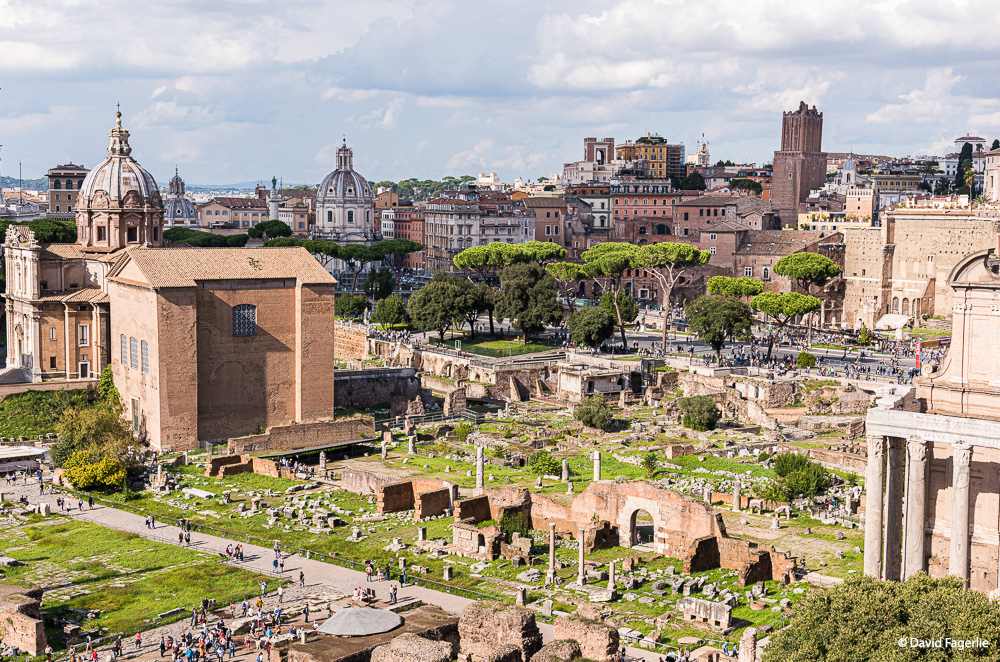
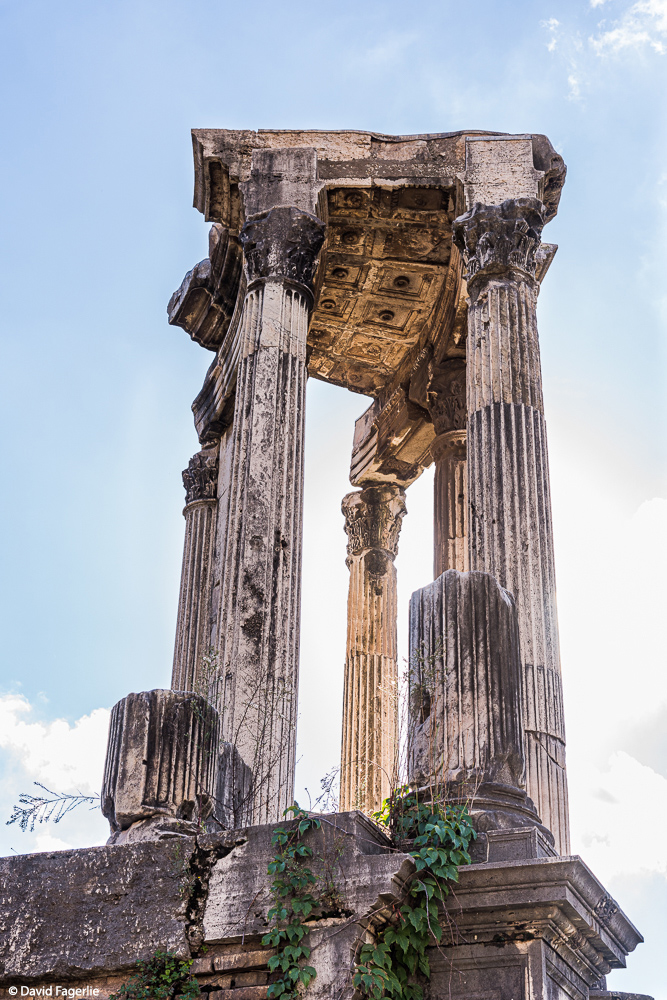
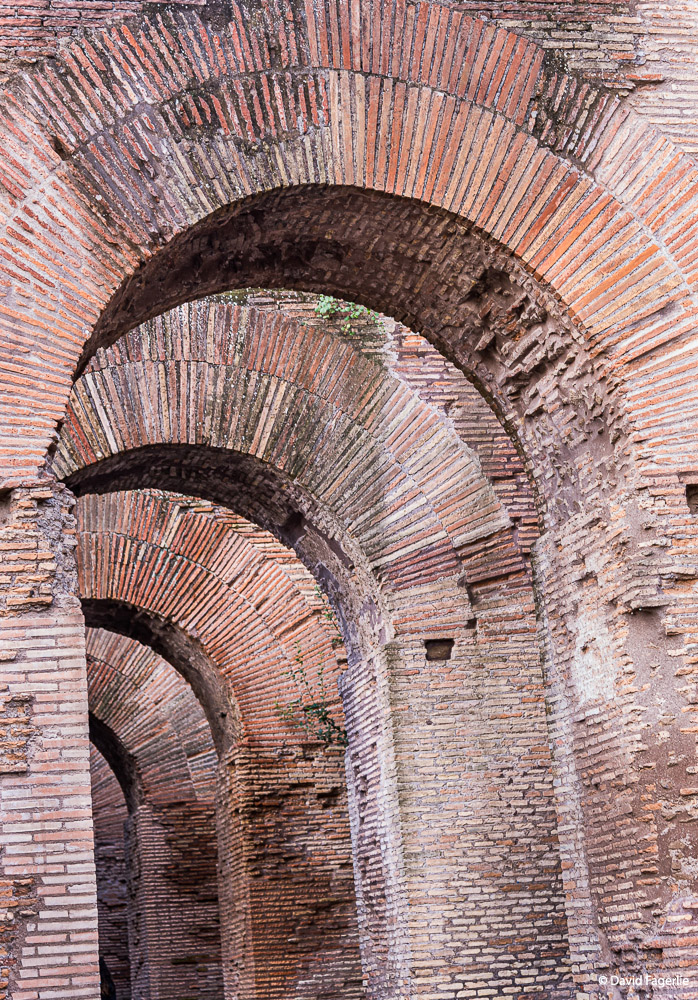


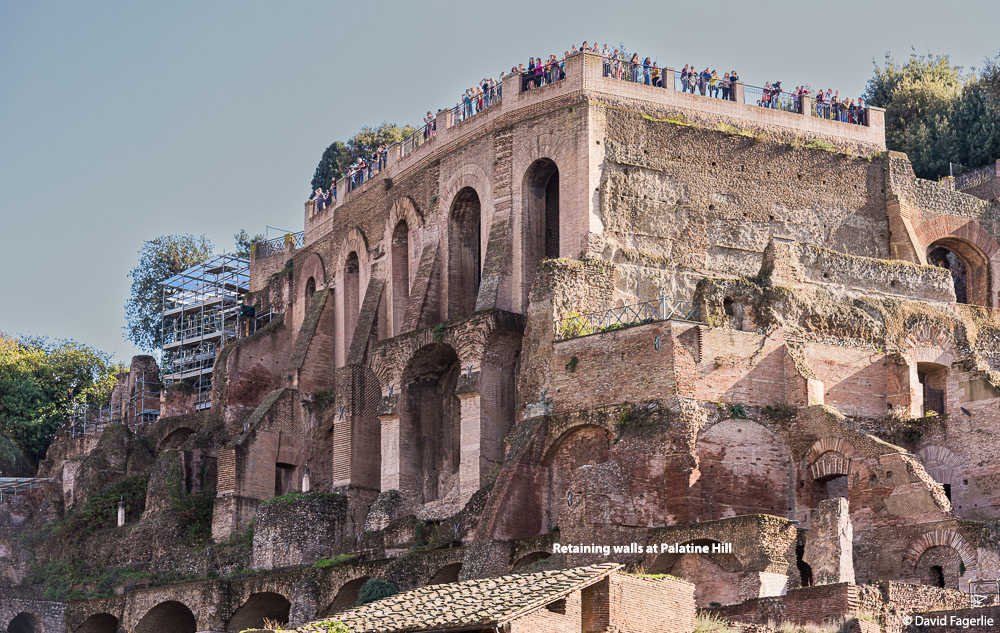

The Arch of Constantine is at the far end of the Forum next to the Roman Colosseum. The Roman Senate built the arch in 315 CE to honor Constantine I’s 312 CE victory over Maxentius (the Roman emperor 306-312 CE) in the Roman civil war.
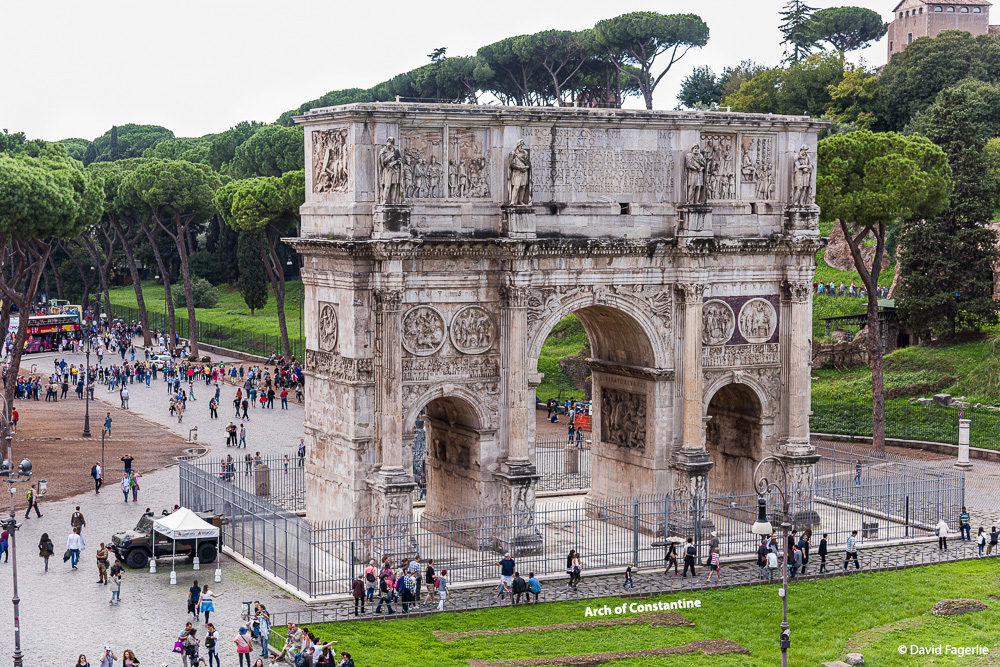
Flavian Amphitheater/Roman Colosseum
Located at the east end of the Roman Forum, the Flavian Amphitheater, known to Romans as the Amphiteatrum Flavium and later known also as the Roman Colosseum, is a massive oval shaped amphitheater built of limestone, volcanic rock and concrete. It was the largest facility of its kind in the world at the time and could hold more than 50,000 spectators. Roman emperor Vespasian began construction on the site of Emperor Nero’s lake and gardens at his extravagant “Golden House” in 72 CE, which was left vacant by Nero’s suicide. Construction was completed by Vespasian’s successor and heir Titus in year 80. Modifications were made during the reign of his other son Domitian from 81 to 96 CE. These three emperors were known as the Flavian dynasty after their family name of Flavius.
Construction was funded by the “opulent spoils” taken from the Jewish Temple in Jerusalem that had stood from about 516 BCE to 70 CE. This taking was a consequence of the first Jewish-Roman war of 66-73 CE, the first of three uprising of the Jewish people against Roman occupation. Labor for construction was provided by Jewish prisoners of war brought back to Rome.
Measuring 190 meters long and 155 meters wide the Colosseum was the largest amphitheater in the Roman world.
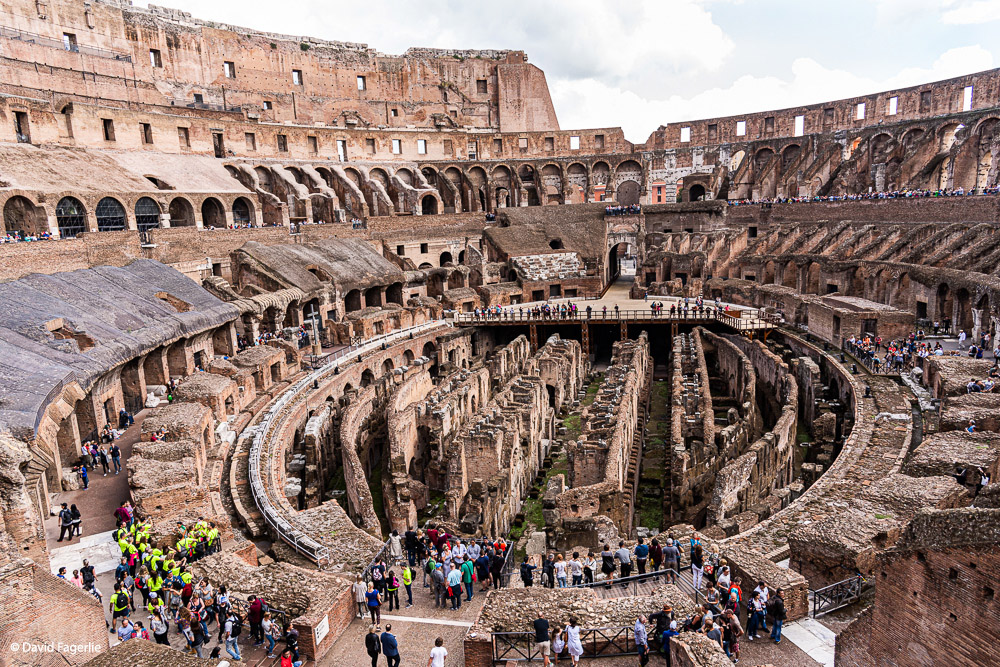
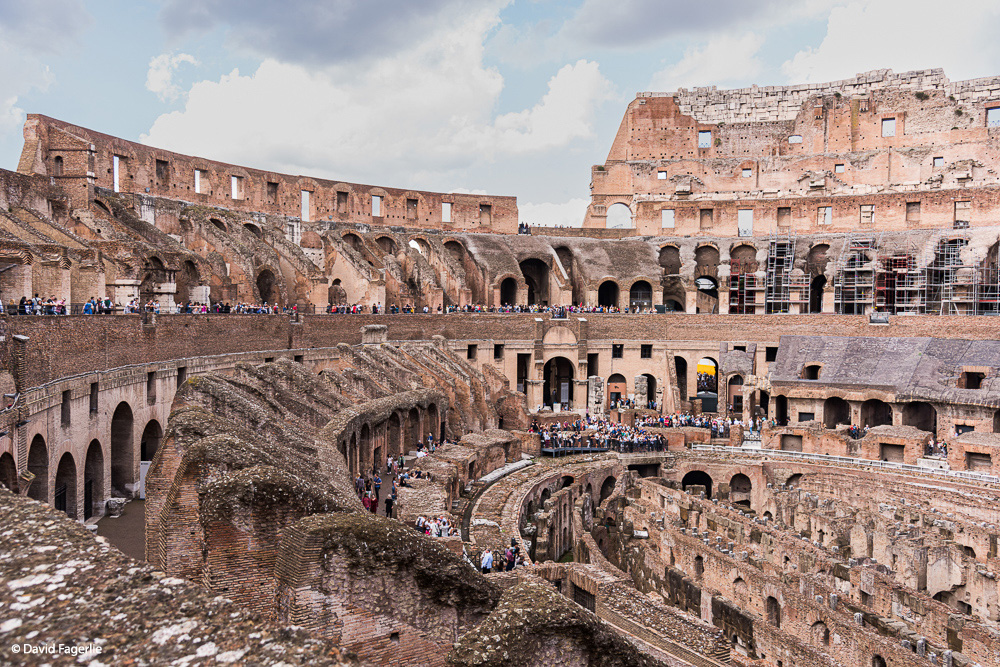
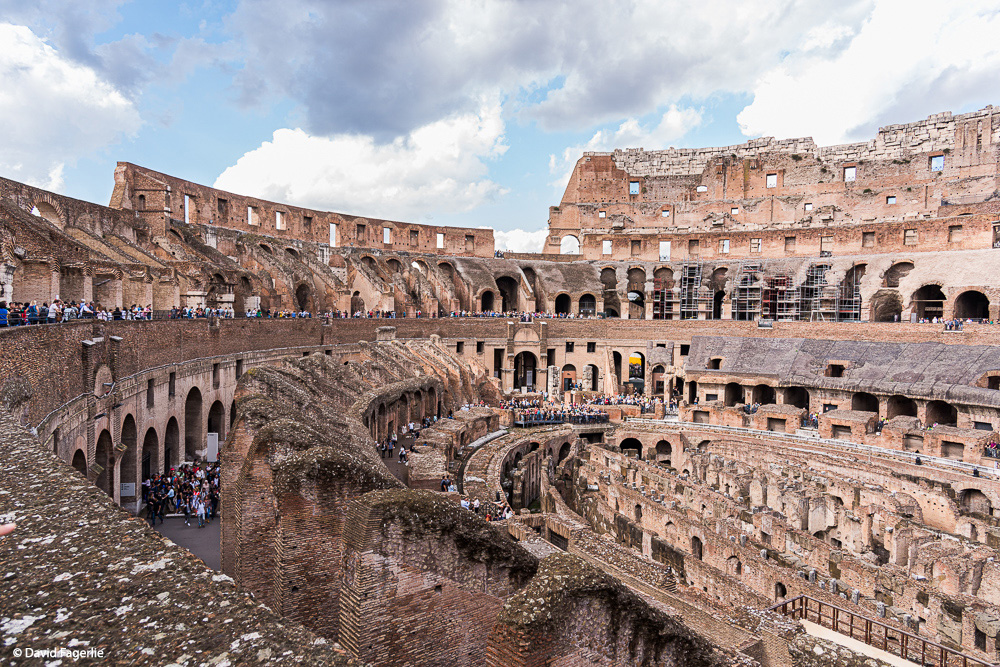
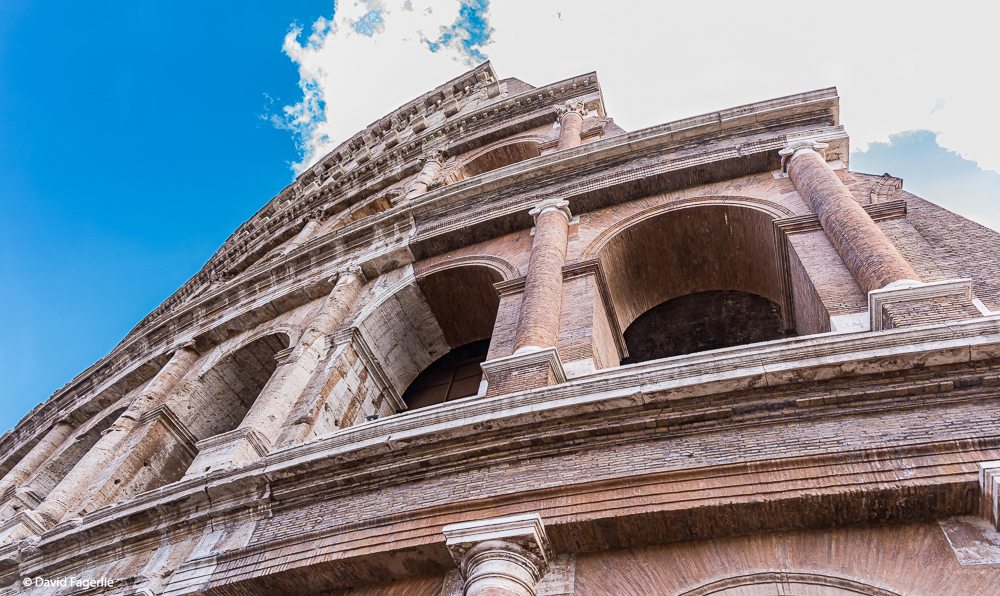
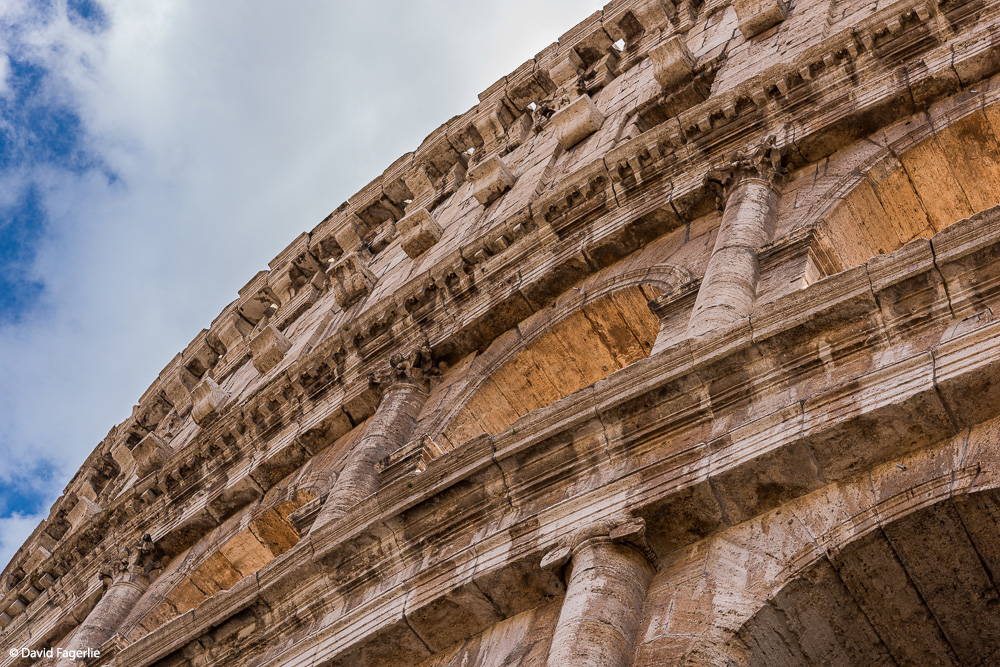
The Colosseum opened in 80 CE with a 100 day gladiator combat and animal fights spectacular. Over 9,000 animals were killed during the inaugural games. Typically, gladiators were convicted criminals, slaves and prisoners of war. Most were men but some were women. Wild animals were brought to Rome from Africa and and the Middle East. The animals were often beaten and starved to create the proper aggressiveness.
Of the 80 arched doorways at the Colosseum, 76 were numbered and correlated with spectator tickets. Two entrances were used for gladiators, one known as PortaLibitina or the Roman goddess of death through which the dead were removed. The other was known as Portages Sanivivaria though which victors and those allowed to survive could exit. The final two doors were for the emperor’s exclusive use.
Inside, surrounding part of the arena, was a wide terrace, backed by a barrier wall, where the emperor in his box and dignitaries could watch the action.

Outside of the terrace were benches of marble or wood for spectators based on three wealth and class groupings of spectators and lastly there was a standing room only area for the most poor and commoner women.
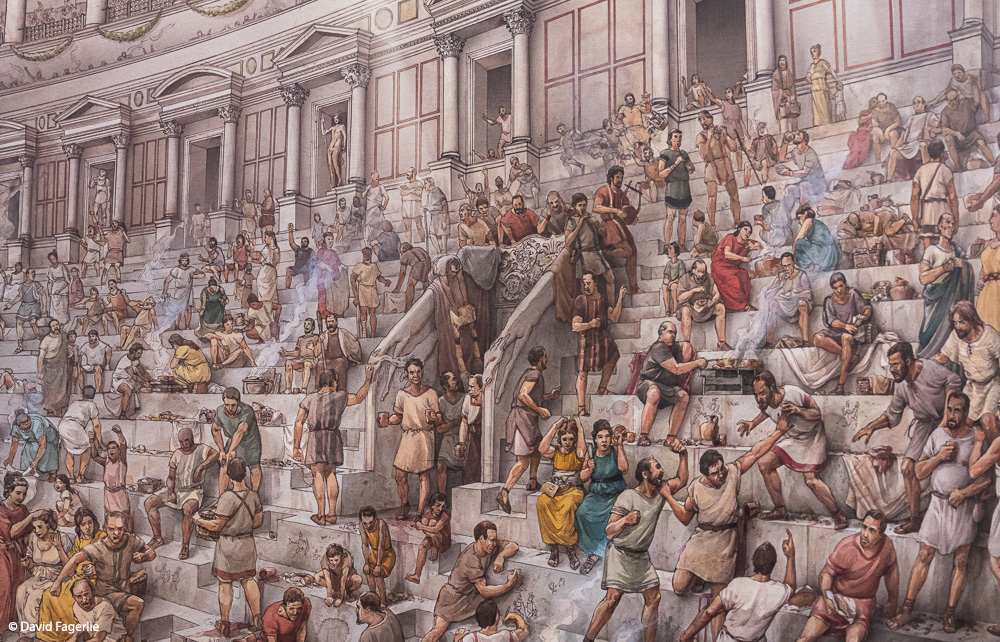
In the early years the arena was flooded from water kept underneath the facility to replay mock sea battles. Later, the lower area, called the hypogeum, was converted to a complex system of cages and 28 elevators that would deliver animals and gladiators to the arena through trap doors. The sanded wood arena floor was often decorated with rocks and plants to simulate an environment for animal hunts.
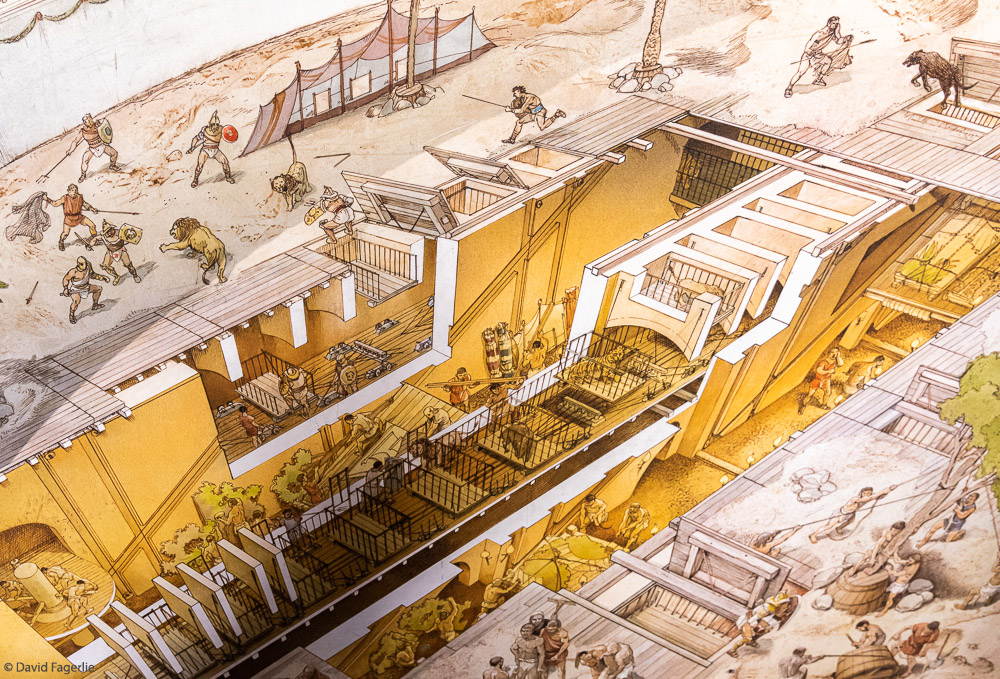
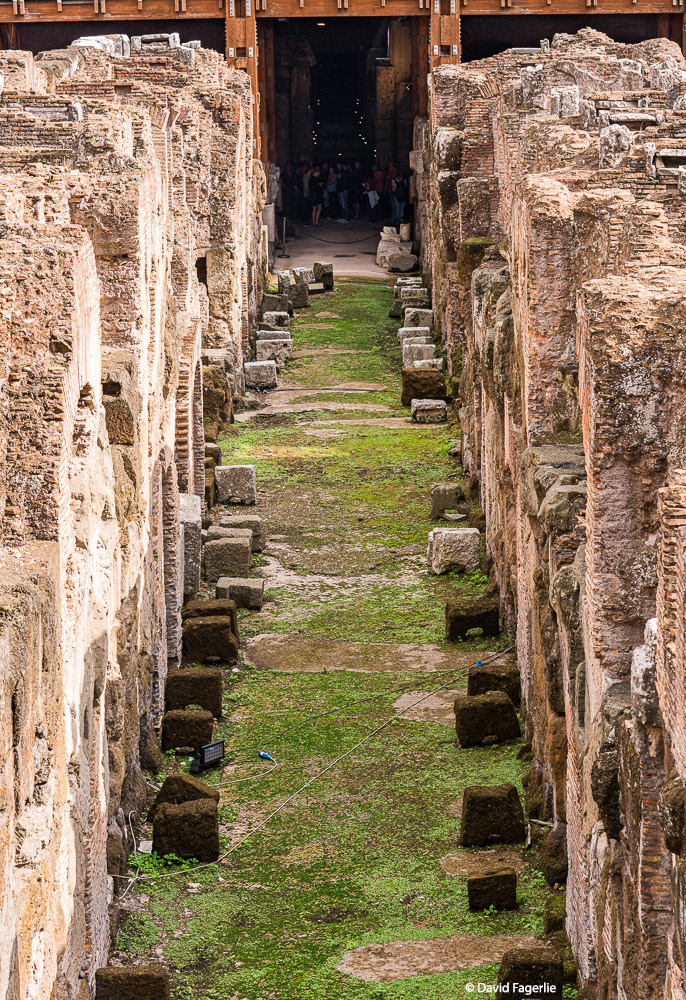
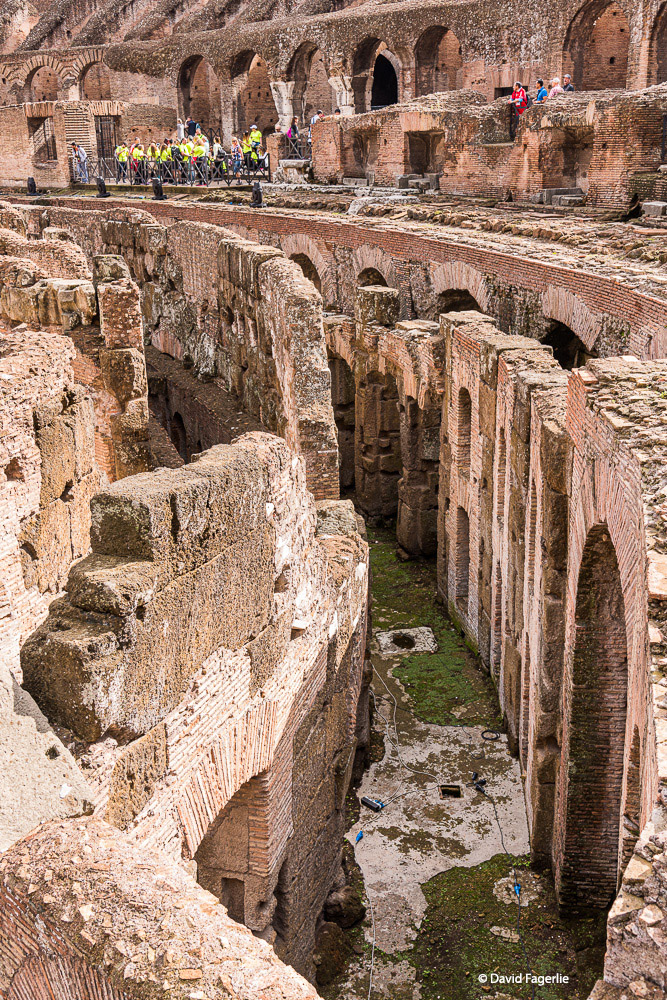
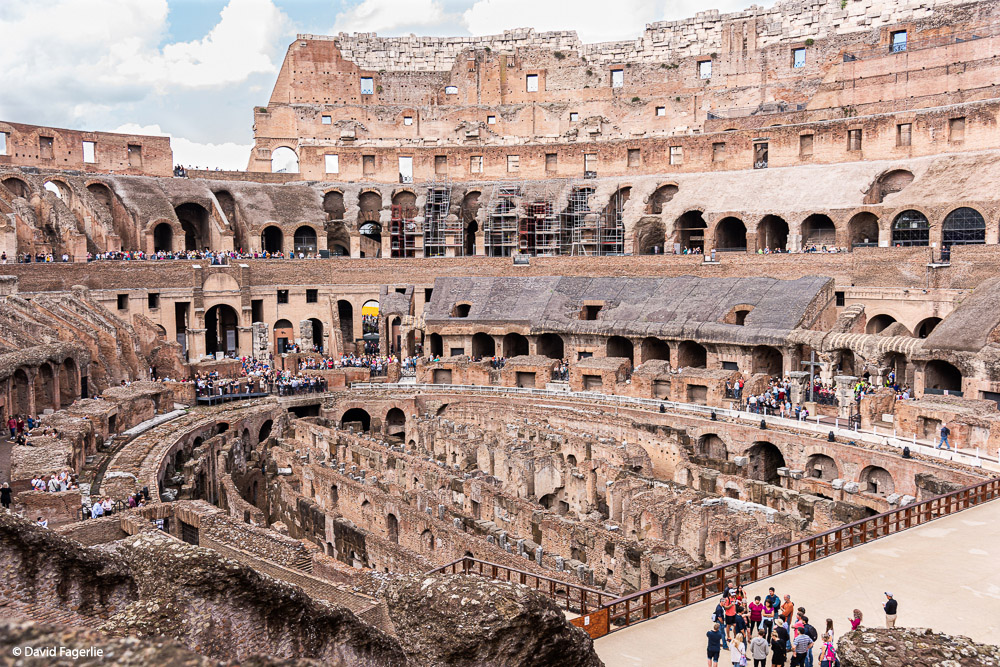
“The slaughter of innocent beasts, including lions, tigers, giraffes, bulls, elephants, hippopotami, bears, wolves and jaguars, was so bad that populations of some animals dropped precipitously in some of their ranges. Experts have estimated that up to 1 million large carnivores and other beasts died in the Roman games at various venues over the years.” – Ancient Origins
If you plan to visit - I suggest buying a tour well in advance, which gets you into a faster waiting line. Plan even further in advance if you want to see the hypogeum; I did not plan well enough.
Atare della Patria
The Altar della Patria holds the Monumento Nazionale a Vittorio Emanuele II, a monument to the person considered the father of Italy’s reunification. The building also includes a monument to the unknown Italian soldier. Vittorio Emanuele II was king of Sardinia from 1849 until 1861 CE when he became king of a unified Italy, the first since the 6th century. He is considered “father of the Fatherland.”
While not as grand as some of the other spectacles of Rome, it is an interesting place with wonderful views from the rooftop. In the next photo you can see the top of the white monument behind the Forum.
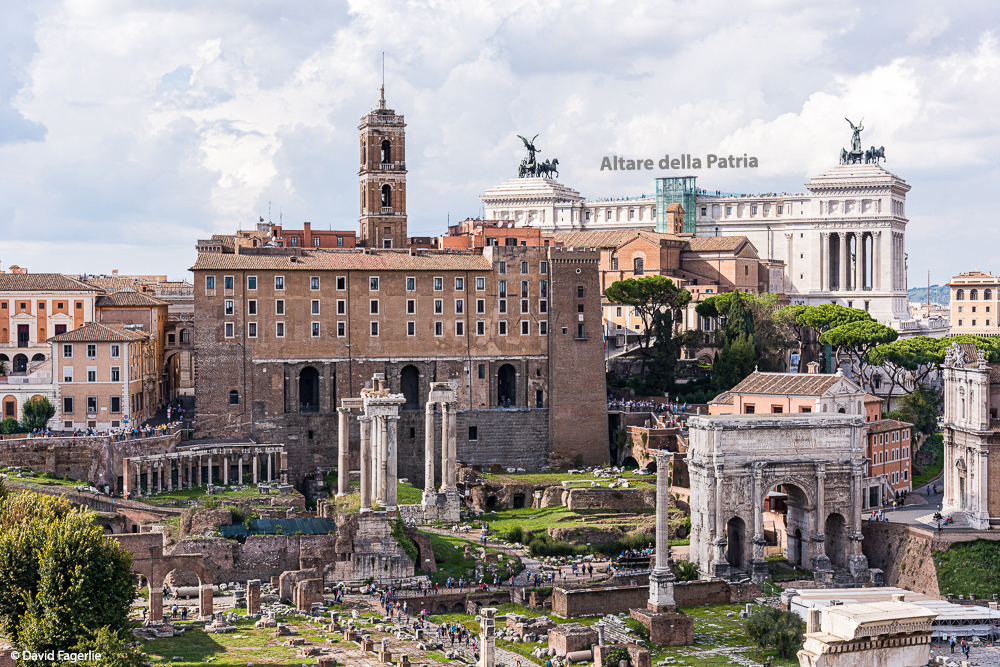
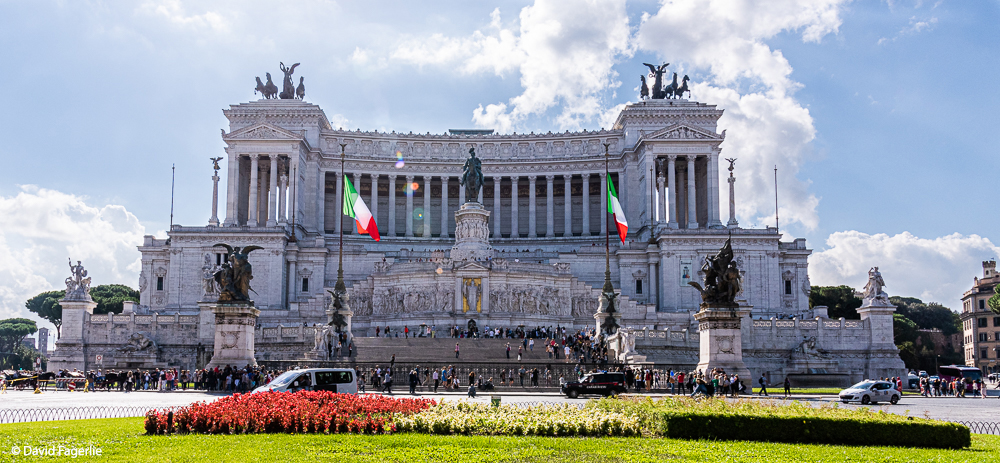
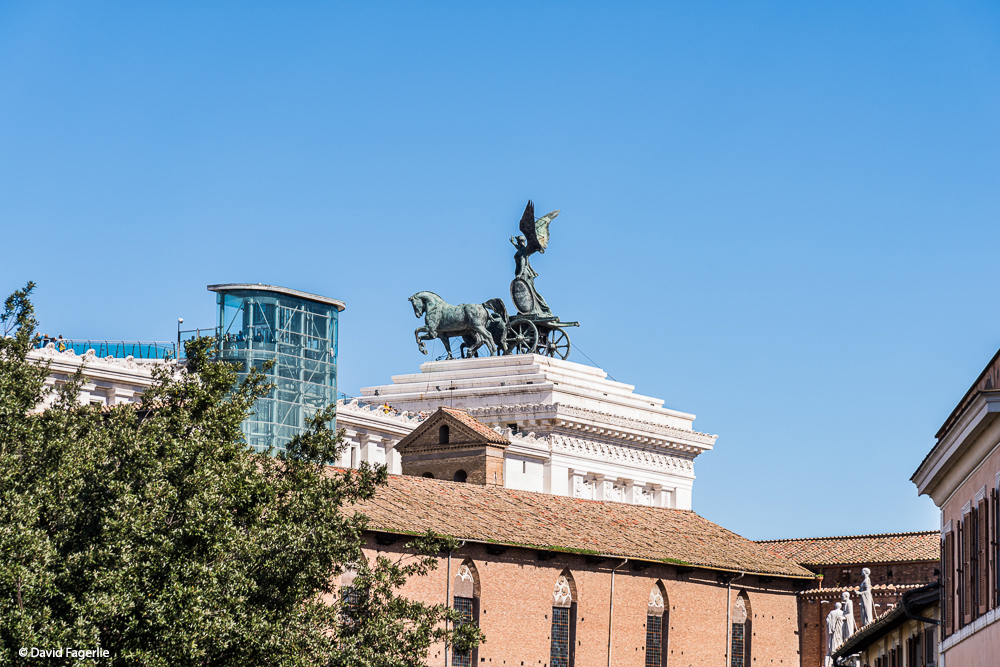
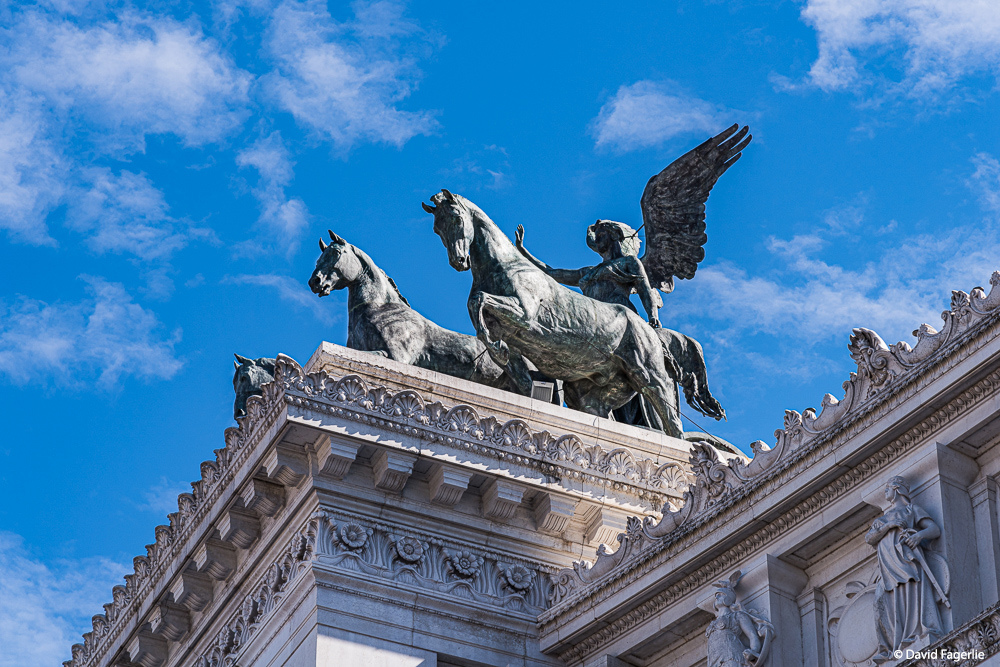
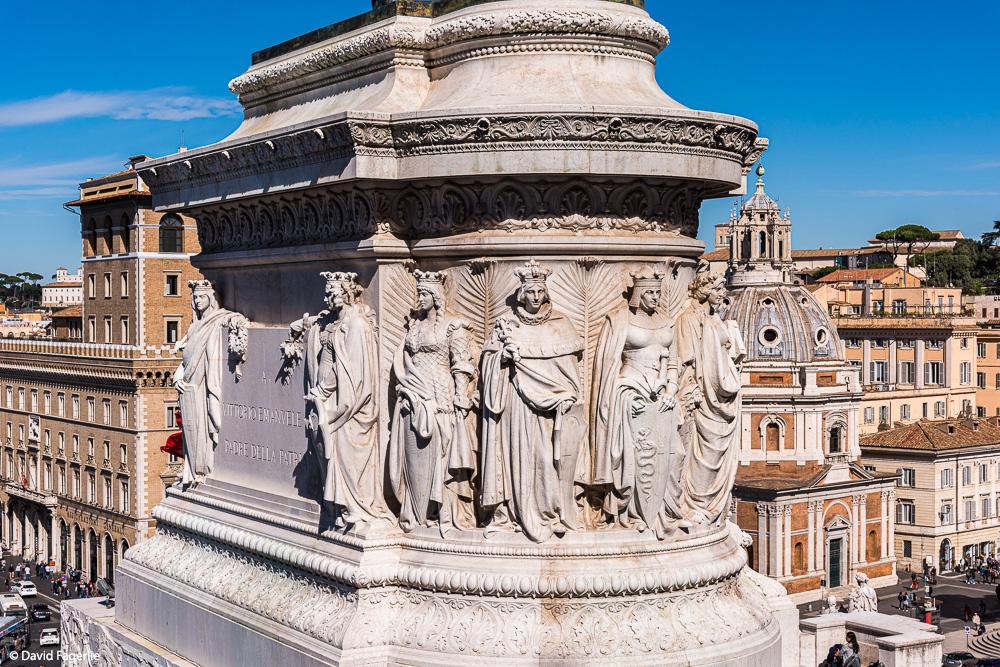
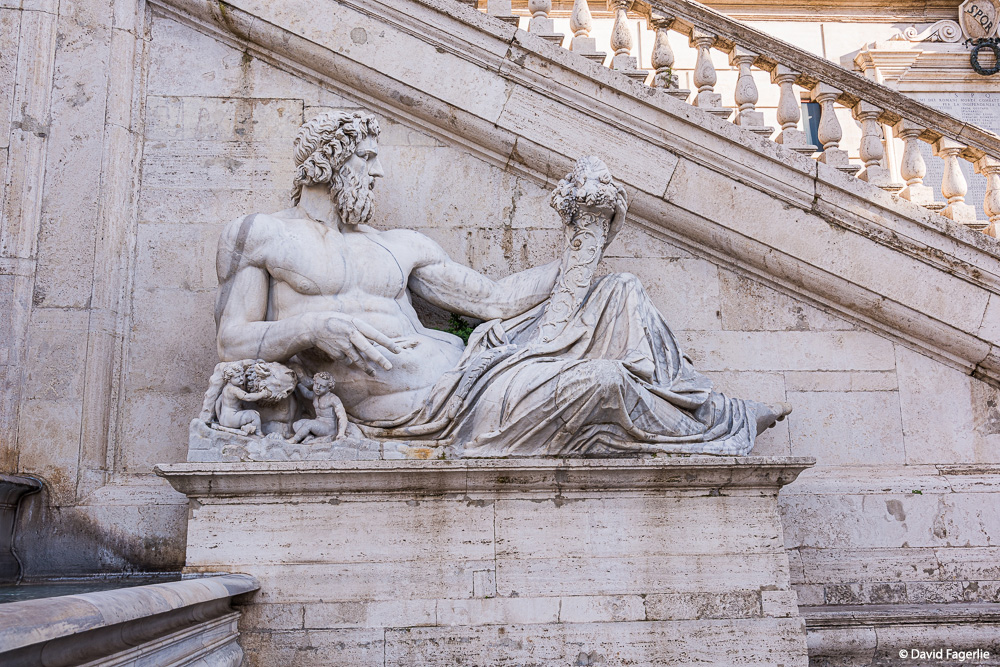
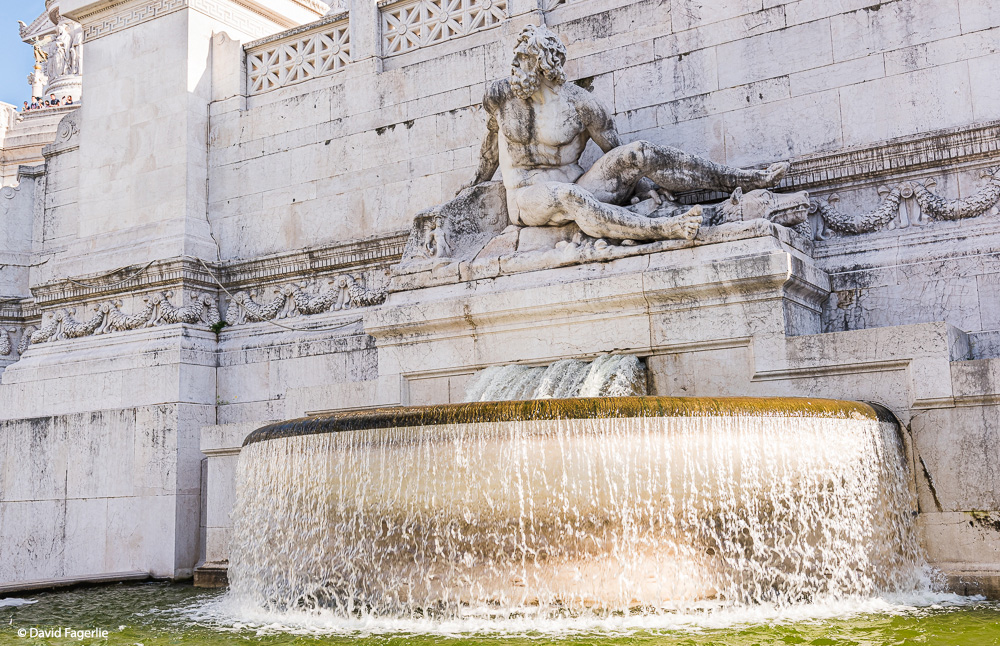
Higher resolution images in this chapter are available in a slide show in Galleries. You can access the gallery for this chapter directly by clicking HERE.
Next Monday we will do a walk-around neighborhoods of Rome. See you then.
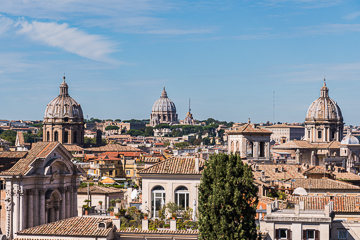
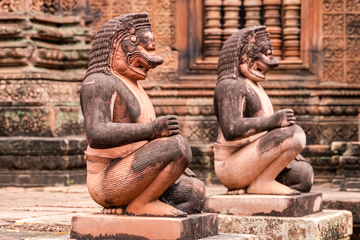
December 09, 2020
Chapter 2: Walk Around Rome
This chapter, entirely photos, is a lighthearted stroll through neighborhoods in Rome.